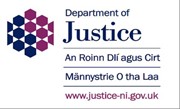Modern slavery and human rights in business
Modern slavery: write a slavery and human trafficking statement
You should add your most recent modern slavery statement to the modern slavery statement registry.
Process for submitting to modern slavery statement registry.
Certain commercial organisations must publish an annual statement setting out the steps they take to prevent modern slavery in their business and their supply chains. This is a requirement under Section 54 (Transparency in Supply Chains) of the Modern Slavery Act 2015.
Who needs to publish a statement?
A commercial organisation is required to publish an annual statement if all the criteria below apply:
- it is a 'body corporate' or a partnership, wherever incorporated or formed
- it carries on a business, or part of a business, in the UK
- it supplies goods or services
- it has an annual turnover of £36 million or more
Organisations are responsible for determining whether the legislation applies to them. You may wish to seek legal advice to decide if your organisation needs to produce an annual statement.
Read full details on who needs to publish an annual modern slavery statement.
Demonstrate compliance with the minimum legal requirements
To meet and demonstrate you have met the minimum legal requirements:
Update your modern slavery statement every year
Each year, assess whether your organisation meets the criteria for the preceding financial year. If so, publish a modern slavery statement. Statutory guidance states that you should do this within 6 months of your organisation’s financial year-end. You should also include the date your financial year ended.
Publish your modern slavery statement on your UK website
Place the link in a prominent place on your homepage. It is good practice to keep previous statements on your website so that your progress can be monitored. If you do not have a website, you must provide a copy of the statement in writing to anyone who requests one within 30 days of receiving the request.
Get approval from the board of directors (or equivalent management body)
To demonstrate that you have met this legal requirement, your statement should clearly state that board approval has been given with the date of approval.
Where the organisation is a limited liability partnership (LLP) the statement must be approved by the members. Your statement should clearly state that members’ approval has been given with the date of approval.
Get sign-off from a director (or equivalent) or designated member (for LLPs)
Include their name, job title, and the date. You do not need to include a physical signature, but you should still clearly state that it has been signed.
For a limited partnership, registered under the Limited Partnerships Act 1907, a general partner must sign the statement. For a limited liability partnership, a designated member must sign it. If the organisation is any other kind of partnership, a partner must sign it.
What should your slavery and human trafficking statement include?
Organisations are not expected to guarantee that all their supply chains are ‘slavery free’. However, statements must describe the steps your organisation has taken during the financial year to deal with modern slavery risks in your supply chains and your own business.
If your organisation has taken no steps to deal with modern slavery risks, you must still publish a statement setting this out.
The Modern Slavery Act recommends that you cover the following six areas in your statement:
- Organisation structure and supply chains
- Policies in relation to slavery and human trafficking
- Due diligence processes
- Risk assessment and management
- Key performance indicators to measure effectiveness of steps being taken
- Training on modern slavery and trafficking
More information about these areas is available in the Home Office’s statutory guidance.
Add your statement to the government registry
The Home Office has launched the government modern slavery statement registry to make it easier for people to find modern slavery statements.
As well as publishing your statement on your website, you can add your most recent statement to the registry to share the steps your organisation is taking to prevent modern slavery in your supply chains.
Add your most recent statement to the registry.
You will need to provide basic information about your organisation and your statement.
You will also be able to provide a summary of your statement by answering additional questions. These questions are optional, however you are encouraged to answer all questions as fully as possible, to help improve your understanding of modern slavery risks and best practice.
Read all of the required and optional questions to help you prepare your submission.
Anyone interested in viewing statements can use the government registry to search for organisations’ statements and view the summaries they have provided.
Best practice
The detail and quality of information you include under each of the 6 areas should improve in successive annual statements. Use your statement to show how you are:
- acting transparently and disclosing information about any modern slavery risks you have identified and what actions you have taken in response to them
- targeting your actions where they can have the most impact by prioritising your risks
- making year-on-year progress to address those risks and improve outcomes for workers in your business and supply chains
More resources and guidance
The Home Office's statutory guidance provides more detailed advice for organisations on complying with section 54 of the Modern Slavery Act 2015.
The government has announced future changes to the reporting requirements for modern slavery statements. For more information on these changes, read the transparency in supply chains consultation response.
These changes have not yet come into effect and organisations should continue to report under the current requirements set out on this page.
If you have any questions about the modern slavery reporting requirements contact modernslaverystatements@homeoffice.gov.uk.
- Modern Slavery Helpline0800 0121 700
